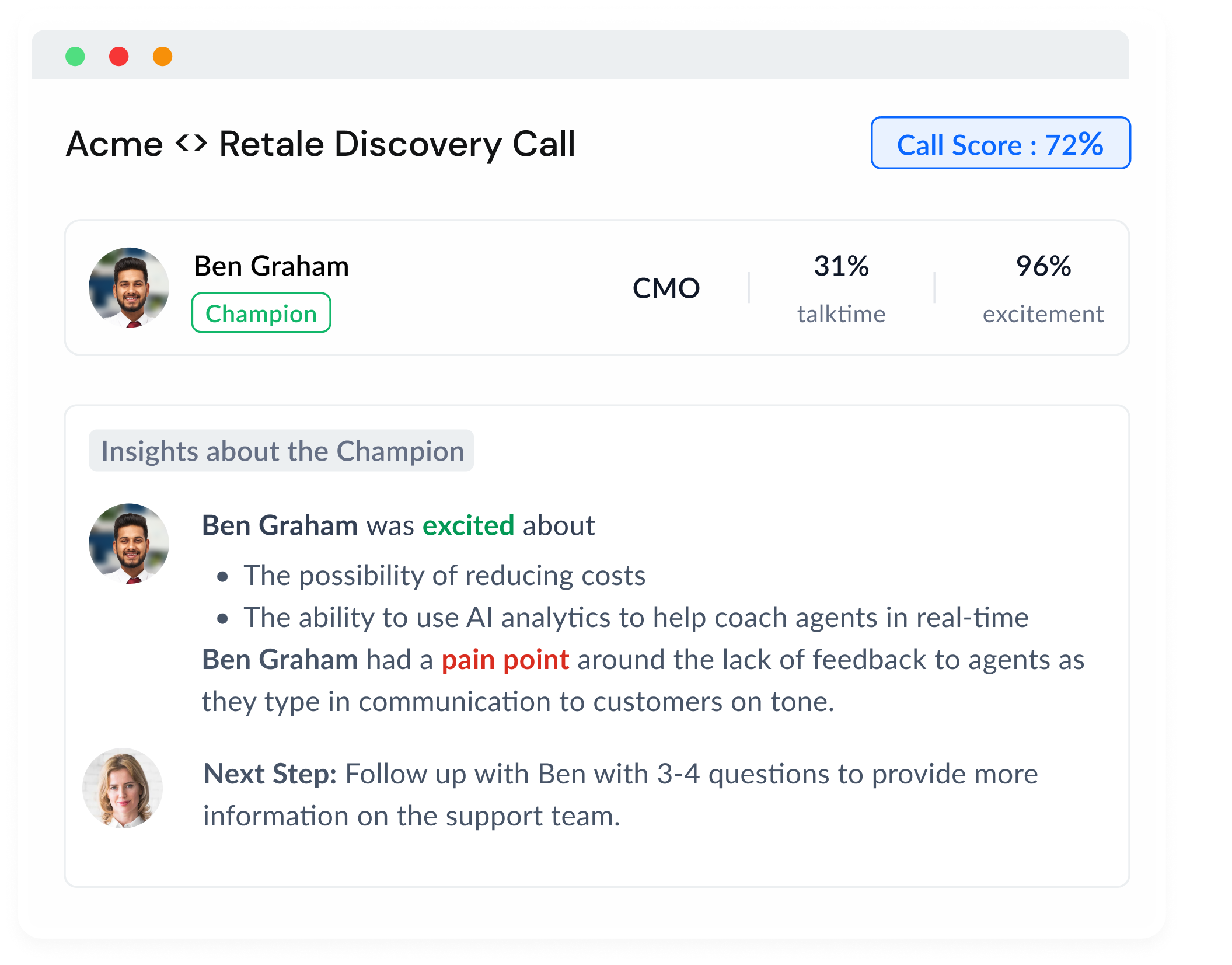A successful pilot or proof-of-concept (POC) program doesn’t happen by accident. While POCs are an essential part of many sales processes, especially in tech, I’ve seen many reps stumble at this stage by rushing into a proof of concept without planning what “success” really looks like. It’s critical to define the right metrics (something the prospect cares about and that you can deliver on), and then execute on them. There’s a reason why Metrics is the first word in one of the most popular sales methodologies MEDDPICC (or MEDDICC), and today we’ll dive deep into what it entails, and how to do the right thing for your deal.
With the right discovery and framework, you can design a POC that transforms you into a problem-solving hero.
The keys are simple:
- Ask good questions to find the metrics that matter.
- Estimate realistic uplift that will make a meaningful impact.
- Get formal alignment and buy-in from stakeholders before launching your pilot.
Follow these principles and you'll be positioned to achieve significant, measurable results. You'll build credibility and trust through the expertise and guidance you provide. And you'll prove your solution's ability to drive real change and progress for your prospect's organization.
Let's look at how to put this POC planning methodology into practice…
Ask Questions to Find the Metrics That Matter
A successful pilot starts with asking the right questions. As sales reps, we’re constantly reminded to ask good questions, but it’s easy to forget why that really matters. When planning a proof of concept (POC), questions are what unlock the metrics that truly signify progress for your prospect.
So what does your product or solution actually solve for them? If you’re selling a SaaS security tool, it could be reducing response times for threat detection or decreasing costs from false positives. For an HR platform, it may be lowering employee turnover or improving employee satisfaction scores. The impacts and outcomes that would represent real progress – those are the metrics that matter most.
Through effective discovery, you need to unpack what those metrics are and why they’re important. Go deeper than surface-level demands or expectations. Ask why certain metrics are priorities and what’s driving the need for change. Really listen to understand the challenges and priorities from your prospect’s perspective. Read more on asking great discovery questions in this post.
We’ve found that reps who ask insightful questions are the ones who can design POCs that transform them into problem-solving heroes for their customers. They go into a pilot with a much deeper understanding of what will actually make it a success. And they’re able to have a more collaborative, valuable discussion about how to measure and achieve that success.
So start by asking good questions. Lots of them. The metrics that matter most will emerge from learning what your prospect really needs and why. Those are the ones you’ll want to focus on for your pilot. With a shared understanding of the outcomes that really matter, you’re ready to have a realistic conversation about uplift and get alignment on targets for POC success.
Estimate a Realistic Uplift
Once you’ve identified the metrics that truly matter for your prospect’s success, it’s time to discuss how much uplift or improvement would make a pilot program worthwhile. This is where many reps stumble by either aiming too high or too low with their estimates.
As their trusted advisor, your role is to provide realistic guidance based on your product’s potential impact and what you’ve learned about your prospect’s needs. For a 20% reduction in costs or turnover as a goal, a 10-15% uplift over a few months may be realistic and meaningful. For faster response times, perhaps 20-40% improvement is feasible if you have the data and case studies to support those estimates.
The key is to do your homework and share concrete examples of how other customers have achieved success. Discuss the prospect’s current state to determine how much progress could reasonably be expected during a limited pilot. Then provide your recommended targets and the rationale behind them. Have a genuine discussion about the numbers to land on targets you all feel good about.
While you want to aim high enough to make the effort worthwhile, be careful not to overpromise. It’s always better to overdeliver during a POC by exceeding the agreed-upon metrics. That will build trust and confidence in the partnership for initiatives to come. Underdelivering, on the other hand, damages credibility and may prevent the pilot from leading to a successful project or deal.
No one benefits from targets that aren’t realistic. As the expert, your value is in helping set the right expectations upfront through data, honesty and experience. Have a transparent discussion about achieving significant, yet believable results. Then get formal buy-in from stakeholders on those targets before launching the POC. Alignment on success metrics and expected uplift will ensure you’re all working towards the same outcome.
With the metrics that matter and uplift targets defined, you’ve designed a POC for success. But there’s still an important final step...getting real commitment to proceed if those targets are achieved. We’ll cover that next!
Get Alignment and Commitment
Review the success metrics and expected uplift you’ve agreed upon, and get formal buy-in that achieving those targets would signal a successful pilot. This step is crucial, yet often overlooked. Alignment ensures you have a shared definition of success before investing resources in a POC. And it means if targets are met, the prospect is committed to moving forward with your solution.
Put the metrics and targets in writing via a slide, white paper or email. Explain the rationale again behind your estimates. Then ask directly: “Does this look like a meaningful proof of concept that would demonstrate the value of our solution?” Get firm confirmation, and document that agreement from key stakeholders.
Be prepared for some negotiation. Your prospect may want to start the pilot sooner or modify some targets. Stay flexible within reason, but stand behind estimates you feel confident in. Your credibility is at stake, so don't agree to goals you can't achieve. But focusing the conversation on their needs will make them confident in your guidance.
Why does getting real buy-in matter so much? Without it, a prospect may halt a pilot mid-way through if early results or enthusiasm wane. Or they'll end it without giving your solution a real chance to perform if targets seemed unrealistic from the start. Securing stakeholder alignment sets you both up for success.
An agreed-upon POC framework gives you license to push back if a prospect deviates from the plan or tries to move the goalposts. You have a concrete set of metrics and outcomes the pilot was designed to achieve. Significant changes to scope or success criteria warrant another alignment discussion to ensure you're still on the path to mutual success.
With metrics, estimates and buy-in documented from the key players involved, you have clarity on what success looks like and confidence you're working towards the same goal. But the deal isn't done yet - now the real work begins as you launch an impactful pilot, achieve the results you promised and leverage your success into new opportunities. Onward!
Conclusion
When done right, collaborating with your prospect to design a meaningful POC leads to success for all. Asking good questions, setting realistic targets, and getting real alignment before launching a pilot will transform you into a trusted partner – and change-maker – for your customers. See how Sybill’s conversation intelligence and behavioral AI can help take your discovery and demo skills to the next level.
With a shared vision and commitment, you’re ready to prove your solution’s value through measurable impact and outcomes. And you’ll close more and bigger deals as a result!
Planning a pilot that demonstrates true progress and success. That's the art of becoming a problem-solving hero for your customers. Follow these principles, achieve results together, build partnership and trust. Then prepare to transform more organizations through the collaborative and impactful work you now do so well!















.png)





